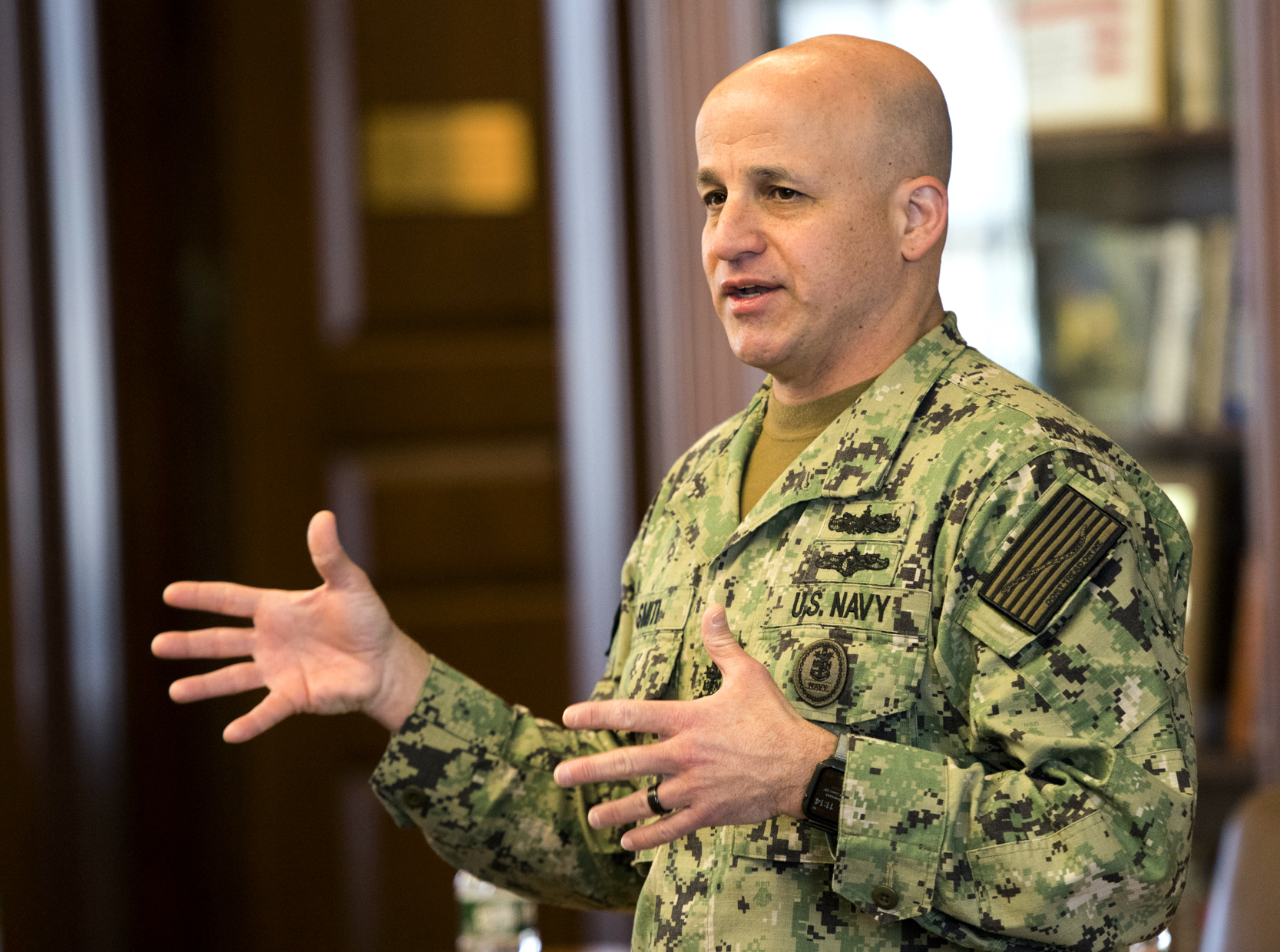
The Navy’s top enlisted sailor is confident that the measures the service is taking now to keep the training pipeline moving will help smooth the flow of personnel in the coming months, when the Navy can resume its movement of sailors across the force.
Though new recruit training has slowed due to the COVID-19 pandemic, the Navy believes it can make up the difference during its “busy season” this summer, Master Chief Petty Officer of the Navy Russell Smith told USNI News in an interview.
Smith told USNI News that the Recruit Training Command in Great Lakes, Ill., has taken all the right steps to balance health and safety with the need to keep new sailor production on schedule. Though the Navy decided to take a two-week pause in bringing in new recruits, after one tested positive at Great Lakes, recruits already at the depot continue to be trained. And much of the staff has left their homes to live at the recruit depot full-time to minimize the risk of the virus taking hold.
“Great Lakes is having, I think it’s somewhere around 800 people from the staff living on board so that they minimize the opportunity for exposure to recruits. We put (recruits) in a 14-day ROM [restriction of movement] when they come aboard; it’s almost meaningless if they continue to have exposure to people who are coming and going from the outside world. So the solution they came up with is, let’s move everybody aboard,” Smith said.
“I love the phraseology too, because it fits the Navy: the [recruit division commanders] and the staff are getting underway with their recruits, I love that.”
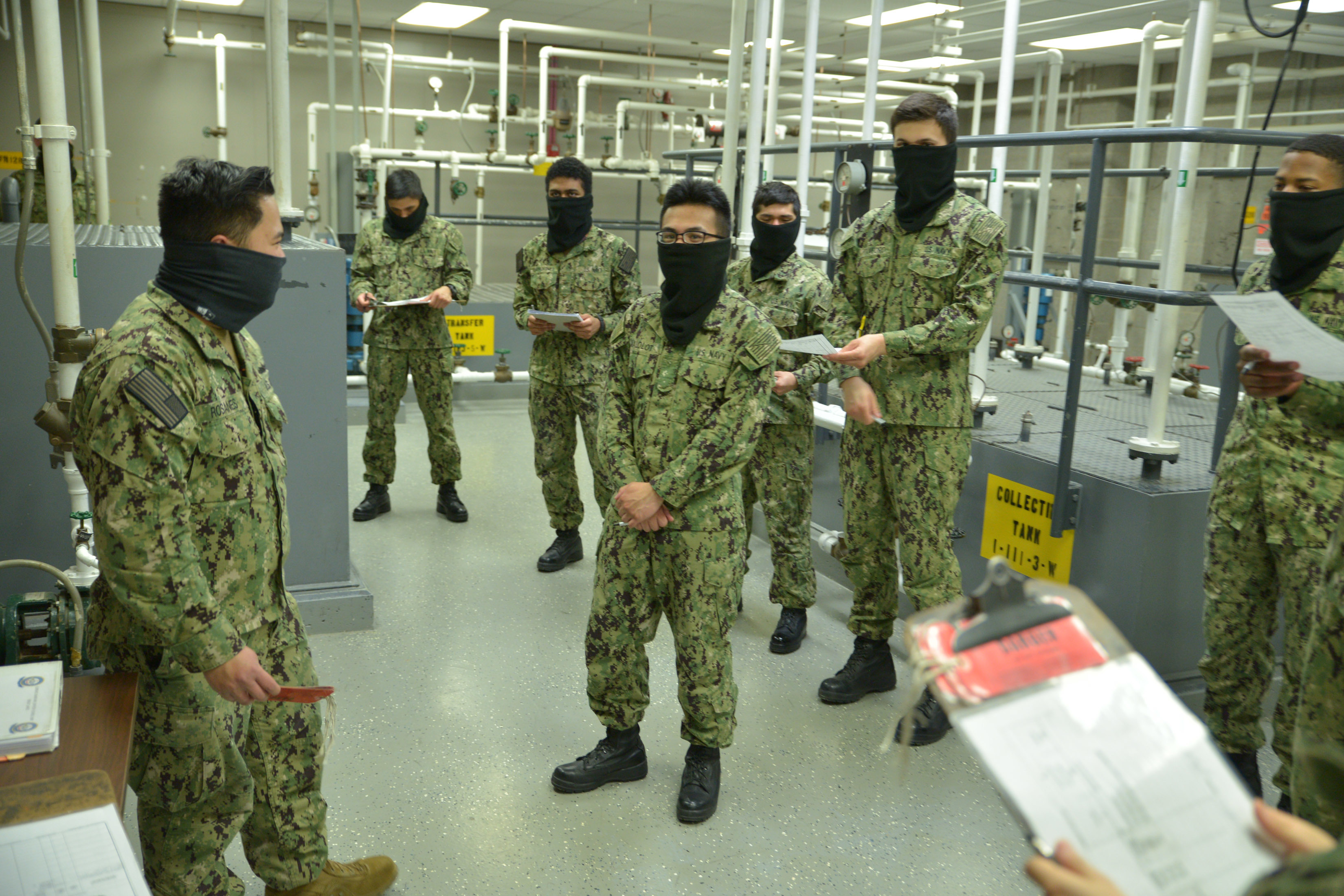
He said the two-week pause in bringing in new recruits allowed the staff to clean the facilities, look for any new positive cases and ensure everyone is educated on best practices for staying healthy while conducting training, which involves close contact between the recruits and the trainers. New recruits will resume shipping to Great Lakes beginning April 19.
“There is a closeness and proximity that comes with the kind of training that has to happen in a place like recruit training, and that’s the whole purpose of the – what some family members, I’m sure, are not happy about – but that extreme measure of bringing the entire staff aboard the base to live until we’re through the worst and most contagious part of this,” Smith said.
“We can’t, to your point, necessarily avoid instances where we’re going to have people within six feet of a recruit to do this right – because if we can’t do it right, there’s no point in doing it, because what we cannot do is send unprepared recruits out to the fleet. We can’t soften, weaken or change the syllabus in a way that we produce the wrong kind of recruit, because that undercuts our efforts to give the fleet what they need. So we have to maintain consistency in the product … even in lesser numbers,” Smith said.
“Unlike the Army, which is primarily a garrison force – as an expeditionary force, the impact on stopping recruiting and stopping the training of accession personnel even over a short period of time would really cripple us, and so we have made every effort to safely continue to do that,” Smith added.
MCPON acknowledged that throughput at boot camp may be “a little bit less” than usual, but he said the personnel community is confident they can catch up over the summer, which is typically the busiest season, or early into the next fiscal year that begins in October.
“When young people graduate from high school typically in May, beginning of June, that’s the beginning of truly our busiest season. … But we may, with a little gas on that fire, be able to make up some of that ground on what we’re losing right now. If this had happened in June, July, August and we were losing that, it would have had a far greater impact on our ability to man the fleet long-term,” Smith noted.
The biggest factor in being able to increase throughput this summer will be having enough recruit division commanders (RDCs) on hand to train the recruits.
“The beauty of it is, we have reservists who have done this job. We have recently separated people who’ve done this job. We have ways to entice and pull back into the fold those familiar with our business that we can more quickly bring on board, because the process of growing a recruit division commander is also not something you do overnight: it takes weeks to do, we carefully hand-select those who have done it. But those who have done a fantastic job for us, and maybe recently moved on, that’s one avenue,” Smith said.
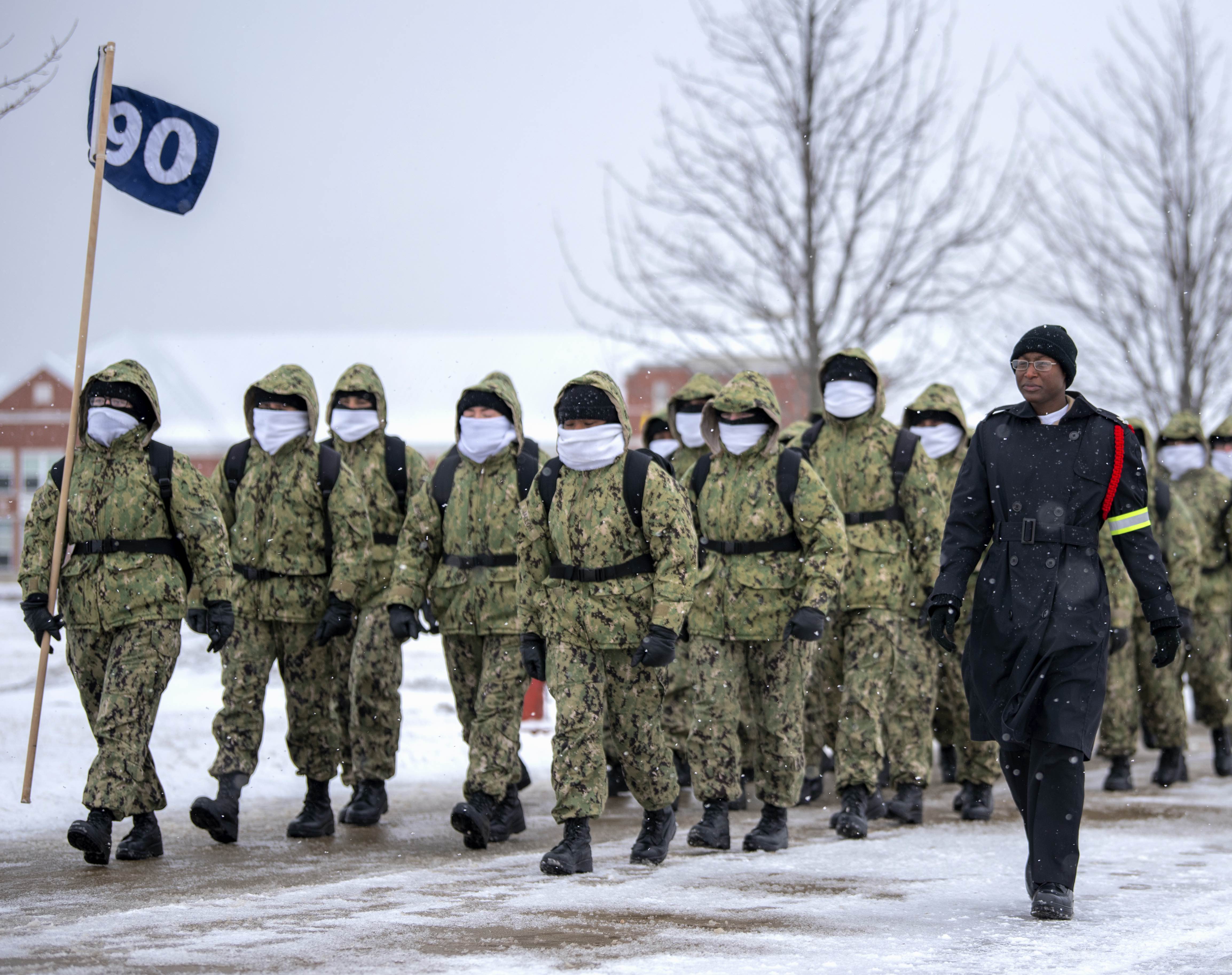
The Navy’s focus on health and safety of new sailors extends beyond boot camp graduation, with the Navy creating “bubble-to-bubble transportation” to take new sailors from Great Lakes to their next training destination in a secure way that doesn’t expose them to any germs, allowing them to continue on in the training pipeline without another quarantine period and without putting anyone at their next location at risk, either.
Smith praised the Navy for “managing that supply chain to the point where we then, we aren’t going to send people [for a permanent change of station] out to ships in Italy and Spain, but we’ll continue the training so that we don’t lag too far behind, so that if in 60 to 90 days we can restart full operations, then we can and we will be able to make up that ground over a pretty robust summer.”
Asked how confident he was that this summer would be the timeline for making up for missed permanent changes of station (PCS) and new assignments, he caveated that “that’s just me as the lay person speculating based on what I see on TV. The [Defense Department] picked 11 May as initial date to sort of take a knee and reassess where do we go from here. And so I think probably a week or two short of that is when our service chiefs will huddle with [the secretary of defense] and we’ll really have a better idea of the way ahead. But [infectious disease expert Anthony Fauci] said many times, the virus determines the timeline, and if the data doesn’t support that, we won’t. But if we feel like we can continue to execute safely, we will.”
Smith said that a small number of PCSs were being allowed today as rare exceptions to the DoD stop-movement order put in place last month, to fill critical needs that can’t be met locally. He said that, even if the data doesn’t support resuming mass movements of people this summer, “we might have something in the middle that allows us more flexibility to meet needs but for the most part still keeping moves to a minimum.”
MCPON acknowledged that, even outside of those moving to new assignments, the COVID-19 pandemic has created a lot of stress for sailors and their families. The Navy can better control the health and readiness of units that are at sea right now, compared to those that are in port, exposed to germs and in many cases trying to work remotely. As a result, some ship crews have gone into a 14-day ROM period and then headed out to sea, in a move that’s good for the fleet but tough on families.
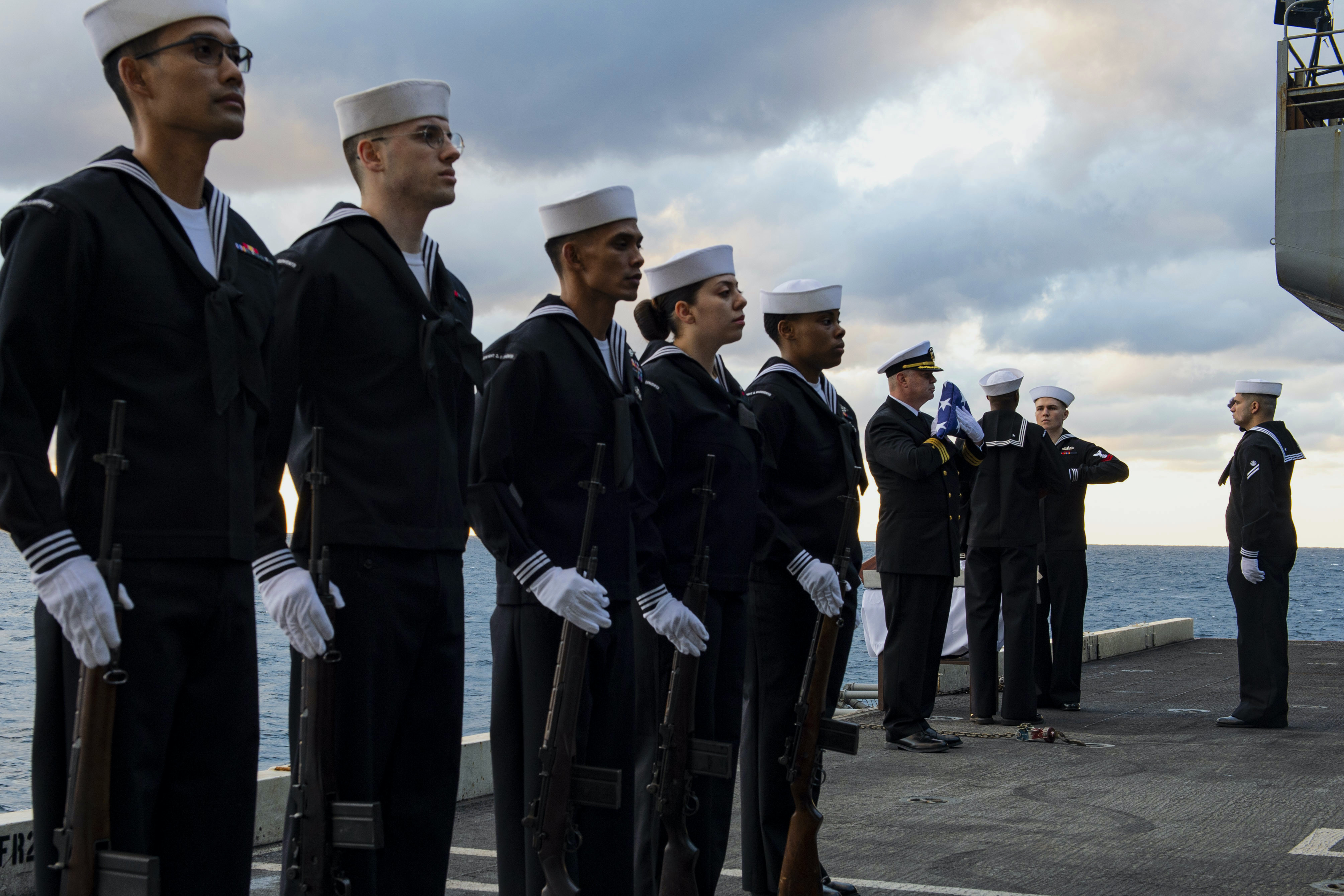
“There is an aspect of combat readiness that can only be done in person. We are still putting ships through training cycles, we are still getting them ready to get underway. As you heard the [chief of naval operations] say, we’re doing ROM periods for more of our units to ensure that we send safe ships out. Today we have 90 ships, four carriers, out there operating safely and virus-free, and that’s our number-one priority,” he said.
“Whenever our sailors leave their family in a situation that’s not [operations] normal, there’s going to be some concern, there’s going to be some angst that will serve to distract a sailor from what they’re doing, and to some degree there’s not a lot we can do about that,” Smith continued.
“Families are very resilient. And as long as you arm them with the information and the why, they generally get it. And so explaining them that, look, you don’t want your spouse going out to sea and having her operate out there on a ship if we haven’t done our best to ensure that she won’t be standing around in places where you can’t get social distancing around other people, that may not be safe because [a shipmate] may have the virus. So this 14-day period is absolutely essential to the safety of both your spouse and to your own family, because they get infected, they’re coming back to you and they’re going to bring it into your house. So it’s being done to look out for not just the sailor and the combat readiness of that unit, but also for the extended Navy family, who may be inadvertently exposed at the same time.”
Additionally, MCPON said, the social distancing and isolation can take a toll on sailors during this time.
“The Air Force had a couple of suicides, and I wouldn’t say it’s directly attribute to austere measures and sequestration of our folks, but there is some aspect to this social distancing, the isolation that comes with working remotely, not seeing people other than maybe your cat every day, that really makes the aspect of leadership, of reaching out and connecting with people, whether it’s in a FaceTime call, a traditional phone call or a text – I mean, I go through my contact list and I spend time looking at who I haven’t talked to in a while, and I just do buddy checks – and I think that that aspect of who we are is more important today, and will be until we can get back to seeing each other face-to-face more often, than it ever has been to our mental health,” Smith said.
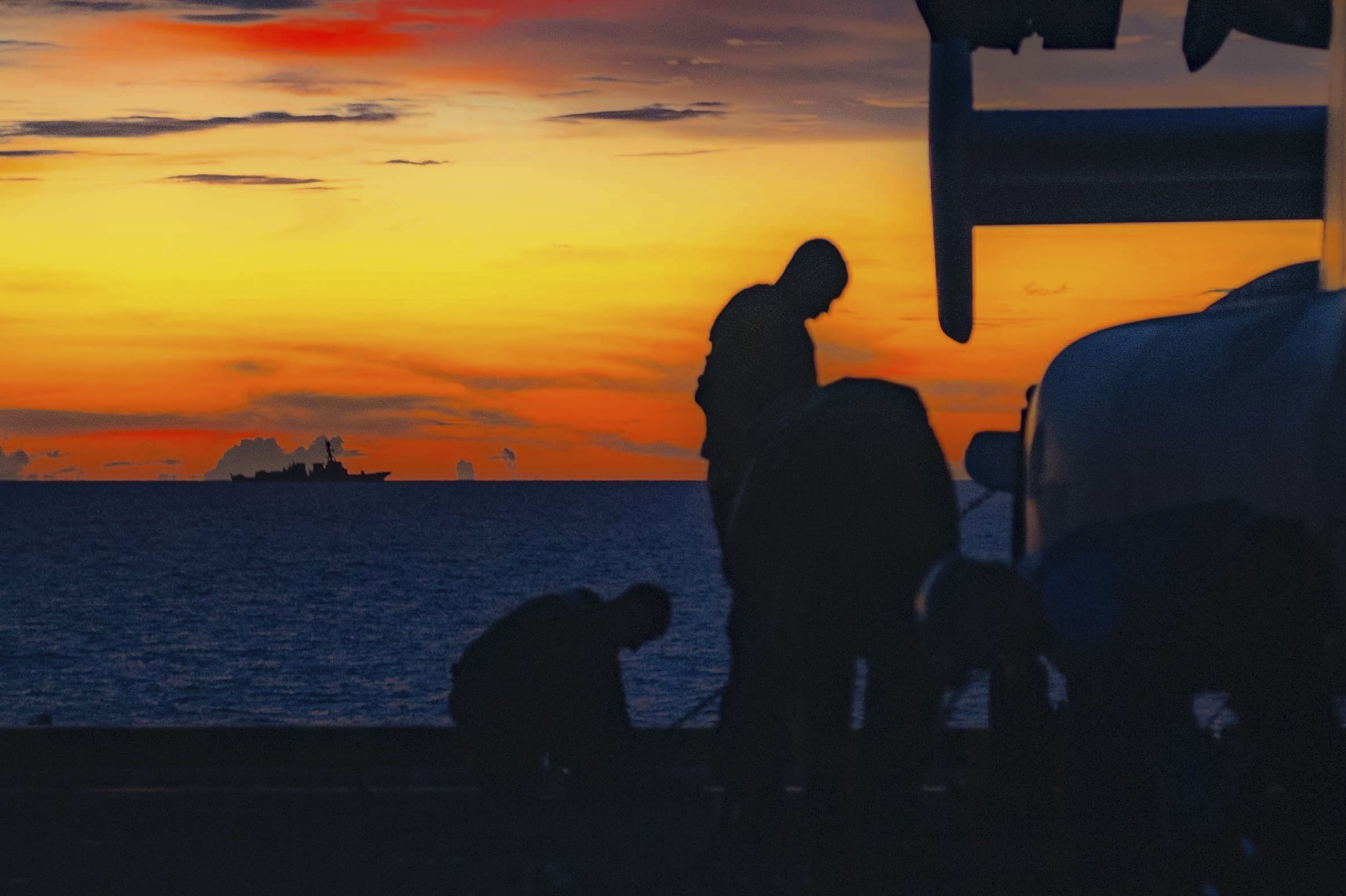
Despite the challenges that the coronavirus pandemic has brought, Smith made clear there was a lot to be proud of in how the Navy and individual sailors have responded. From things as small as a sailor sending hand-made cloth masks to MCPON’s office, to something as big as hospital ship USNS Comfort (T-AH-20) taking on COVID patients in New York even though the ship was designed for trauma triage and not infectious disease outbreaks, Smith said everyone is stepping up to help: The Seabees have helped turn commercial buildings into expeditionary medical facilities; about 1,000 Navy medical professionals went into 11 hospitals across New York City to supplement local health care capabilities; and 400 Navy reservists in the medical field have gone to Dallas, Texas, and New Orleans, La., to get ready for the next likely hotspots.
Smith said this is having an effect on retention, causing some people who were set to leave the Navy to change their minds.
“A lot of people want to stay – I think probably driven a little bit by the uncertainty, but probably more so driven by that altruistic need to help, because they see the military is being used and engaged to help with this. They’re happy to have a purpose and be used meaningfully instead of just getting out and going and sitting back home and waiting for whatever comes next,” Smith said.
“So when it comes to retention, I’m not real concerned at this very second, although we’ve got mitigation measures in place to make sure that as the slow down in the supply chain of people (out of Great Lakes) happens that we’re able to continue to meet the mission.”





